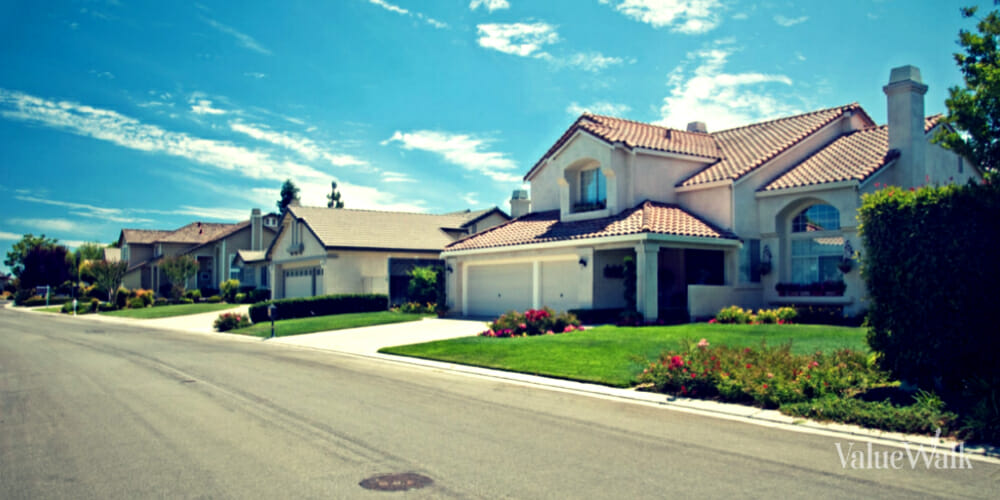On The Mortgage Front
Freddie Mac (OTCMKTS:FMCC) reported the 30-year fixed-rate mortgage averaged 6.31% as of Dec. 15, down from last week when it averaged 6.33%. The 15-year fixed-rate mortgage averaged 5.54%, down from last week when it averaged 5.67%.
“Mortgage rates continued their downward trajectory this week, as softer inflation data and a modest shift in the Federal Reserve’s monetary policy reverberated through the economy,” said Sam Khater, Freddie Mac’s chief economist.
Q3 2022 hedge fund letters, conferences and more
“The good news for the housing market is that recent declines in rates have led to a stabilization in purchase demand. The bad news is that demand remains very weak in the face of affordability hurdles that are still quite high.”
The Mortgage Bankers Association (MBA) reported its Market Composite Index, a measure of mortgage loan application volume, increased 3.2% on a seasonally adjusted basis from one week earlier. The seasonally adjusted Purchase Index was up by 4% and the Refinance Index increased 3% from the previous week – although the latter was 85% lower than the same week one year ago.
“Overall applications increased, driven by increases in purchase and refinance activity,” said MBA’s Vice President and Deputy Chief Economist Joel Kan.
“However, with rates more than three percentage points higher than a year ago, both purchase and refinance applications are still well behind last year’s pace. The ongoing moderation in home-price growth, along with further declines in mortgage rates, may encourage more buyers to return to the market in the coming months.”
On The Homeownership Front
Fewer homeowners were flipping their properties in the third quarter of this year, according to new data from ATTOM.
The latest U.S. Home Flipping Report found 92,422 single-family houses and condominiums were flipped in the third quarter, which accounted for 7.5% of all home sales during the quarter, or one in 13 transactions. This is down from 8.2%, or one in every 12 home sales in the nation during the second quarter, but was up from 5.9%, or one in 17 sales, in the third quarter of last year.
ATTOM noted the home-flipping rate during the third quarter was the third-highest level in the past decade – the high point of 9.7% was recorded in the first quarter of 2022. The typical resale price on flipped homes in the third quarter was $310,000, down by 5.5% from $328,000 in the second quarter and up by 6.9% from $290,000 one year earlier.
“This is a classic good news/bad news report for fix-and-flip investors,” said Rick Sharga, executive vice president of market intelligence at ATTOM. “While flipping activity in the third quarter was among the highest on record, gross profits and profit margins declined significantly, reflecting the overall pricing weakness in today’s housing market.”
As for the 2023 housing market, next year could see the sale of 4.78 million existing homes, according to a forecast published by Lawrence Yun, chief economist and senior vice president of research with the National Association of Realtors (NAR).
Yun predicted home sales will decline by 6.8% compared to the 5.13 million existing homes sold this year, and he forecasted the median home price will reach $385,800, a slight 0.3% uptick from this year’s $384,500.
“Half of the country may experience small price gains, while the other half may see slight price declines,” Yun said. “However, markets in California may be the exception, with San Francisco, for example, likely to register price drops of 10–15%.”
Yun predicted foreclosure rates will remain at historically low levels in 2023, comprising less than 1% of all mortgages. As for mortgage rates, Yun is predicting the 30-year fixed mortgage rate will settle at 5.7%, adding this will be lower than the pre-pandemic historical rate of 8%. And on the rental side of the housing market, Yun expected rent prices to rise 5% in 2023, following the 7% increase that took place this year.
As for the hot real estate markets of 2023, Yun is pointing south, with the top 10 markets to watch consisting of Atlanta-Sandy Springs-Marietta, Georgia; Raleigh, North Carolina; Dallas-Fort Worth-Arlington, Texas; Fayetteville-Springdale-Rogers, Arkansas-Missouri; and Greenville-Anderson-Mauldin, South Carolina; Charleston-North Charleston, South Carolina;
Huntsville, Alabama; Jacksonville, Florida; San Antonio-New Braunfels, Texas; and Knoxville, Tennessee.
“The demand for housing continues to outpace supply,” Yun said. “The economic conditions in place in the top 10 U.S. markets, all of which are located in the South, provide the support for home prices to climb by at least 5% in 2023.”













